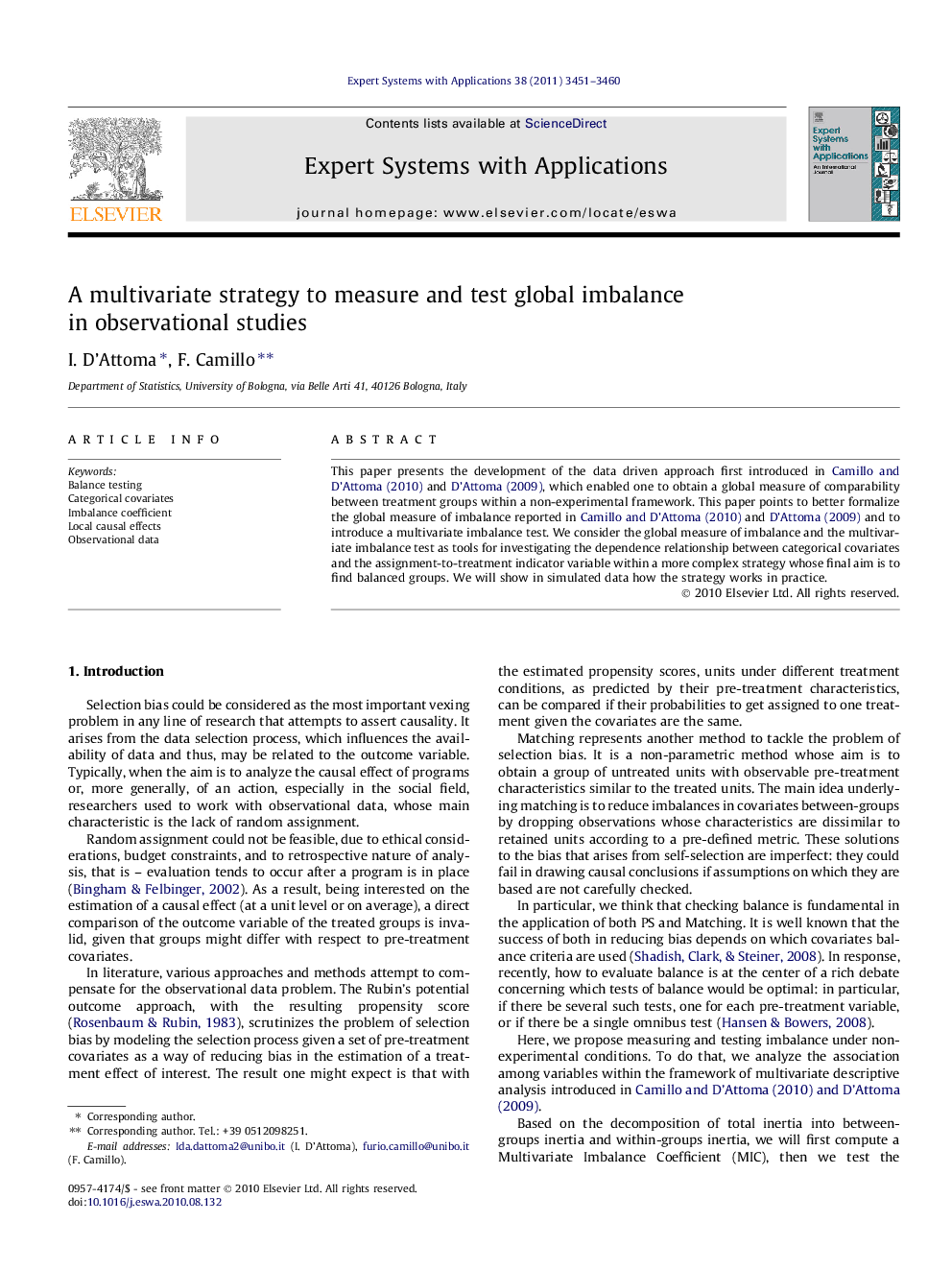| Article ID | Journal | Published Year | Pages | File Type |
|---|---|---|---|---|
| 386002 | Expert Systems with Applications | 2011 | 10 Pages |
This paper presents the development of the data driven approach first introduced in Camillo and D’Attoma (2010) and D’Attoma (2009), which enabled one to obtain a global measure of comparability between treatment groups within a non-experimental framework. This paper points to better formalize the global measure of imbalance reported in Camillo and D’Attoma (2010) and D’Attoma (2009) and to introduce a multivariate imbalance test. We consider the global measure of imbalance and the multivariate imbalance test as tools for investigating the dependence relationship between categorical covariates and the assignment-to-treatment indicator variable within a more complex strategy whose final aim is to find balanced groups. We will show in simulated data how the strategy works in practice.
Research highlights► We introduce a strategy for making causal inference from observational data without model dependence. ► The Global Measure of Imbalance represents a measure of comparability between-groups. ► The Multivariate Imbalance Coefficient expresses the importance of the measured imbalance relative to the total inertia. ► The multivariate test allows to determine if the measured imbalance is significant.
